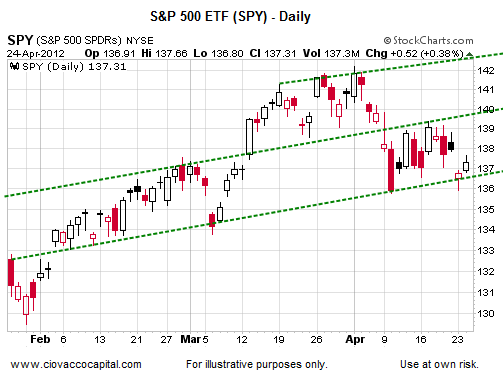What Are Factor Model ETFs_1
Post on: 2 Март, 2017 No Comment

A cover story in Barrons provides lots of interesting details about the history and operations of Dimensional Fund Advisors (DFA). Founded in 1981, DFA has recently reached $332 billion in assets under management (AUM).
About 78% of these AUM are in stocks, and about 85% in low-cost mutual funds with an average expense ratio of 0.39%. The funds have a small-cap and value tilt, based on the Fama-French three-factor model. Lately, the firm started to augment its funds with a profitability factor .
The article states that
More than 75% of its funds have beaten their category benchmarks over the past 15 years, and 80% over five years, according to Morningstar remarkable for what some investors wrongly dismiss as index investing.
To substantiate this, the article compares two similar funds from DFA and Vanguard:
For example, take the Vanguard Small Cap Value index fund (VISVX), which is based on the S&P 600 Small Cap Value index and is the counterpart to Dimensionals DFA US Small Cap Value (DFSVX). The DFA fund has a much smaller tilt its average market value is $1.1 billion, versus Vanguards $2.7 billion and on all measures is much more value-oriented. So the Dimensional fund better captures the market-beating advantage of small and value stocks. In fact, a lot better: The DFA fund returned 42% in 2013, beating 88% of its peers in Morningstars small-cap value category, versus the Vanguard funds 36% return, which beat just 53%. Over 15 years, which includes periods that were less favorable to small and/or value stocks, DFAs fund returned an average of 12% a year, beating 80% of peers. The Vanguard fund returned 10% on average, beating just 37% of peers. The Dimensional fund costs twice as much as Vanguards 0.52% versus 0.24% but the significant outperformance more than makes up for that difference.
That only tells a part of the story. According to Morningstar data. DFSVX had a lower Sharpe Ratio than VISVX in the 3-year (0.96 vs. 1.01) and 10-year (0.47 vs. 0.48) periods through 2013. This is also reflected in the generally higher volatility and upside and downside capture ratios for the DFA fund. As a result, the DFA fund produced lower returns than the Vanguard fund did in the down years of 2007, 2008 and 2011.
The article says that a deliberately paced trading as well as market making in the 14,000 stocks DFA owns both add to its outperformance. However, DFA faces an ongoing criticism: since its funds are sold exclusively through 1,900 rigorously screened and trained financial advisors, they are not easily accessible to individual investors, especially those with a small amount of investable assets, not willing to pay advisory fees or already having an unaffiliated advisor. This is what creates an exclusive dimension of DFA, which Alpholio can help investors enter. Following up on one of the previous posts. lets analyze DFSVX in more detail.
The following chart shows the relative performance of the fund vs. its reference portfolio of ETFs:
An investor who committed to the fund in early 2005 would have gained only a modest amount of cumulative RealAlpha by late 2013. This was mostly caused by the funds underperformance in the three years mentioned above. In addition, at about 22.7% the annualized volatility of the fund was 2% higher than that of its reference portfolio in the overall analysis period.
The next chart illustrates ETF weights in the reference portfolio in the same period:
The fund could effectively be emulated by a collection of just four related ETFs: iShares Russell 2000 Value (IWN; average weight of 34.9%), iShares S&P Small-Cap 600 Value (IJS; 30.1%), iShares Morningstar Small-Cap (JKJ; 18.5%), and iShares Morningstar Small-Cap Value (JKL; 13.7%). (The remaining two ETFs accounted for only 2.8% of the reference portfolio on average.)
The weighted expense ratio of these four ETFs is currently only 0.33% compared to the funds 0.52%. In addition, while an investor trading these ETFs might incur some commission, spread and premium/discount costs, he/she would not have to pay a recurring advisory fee of about 1% (or be forced to switch advisors) to gain benefits similar to those offered by DFA funds. Over time, dedicated factor ETFs will likely make such fund substitution even easier. Thus, entering an exclusive dimension of factor investing is no longer as hard as it has been.
To get a unique perspective on the DFA and other funds, please register on our website .














